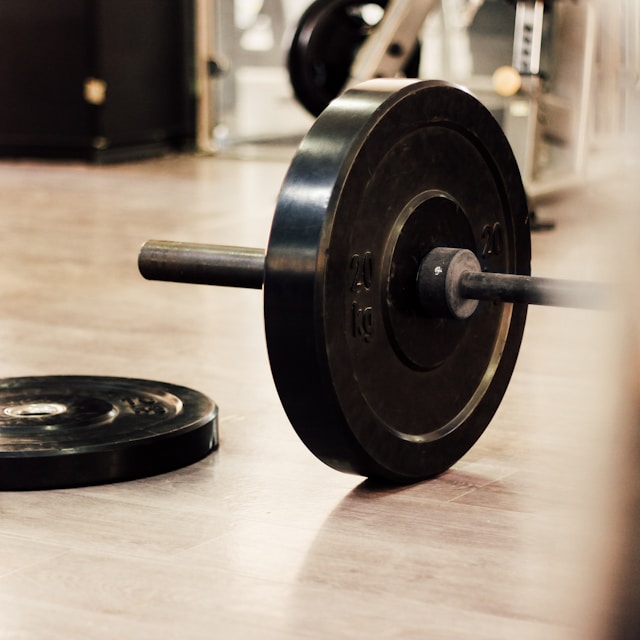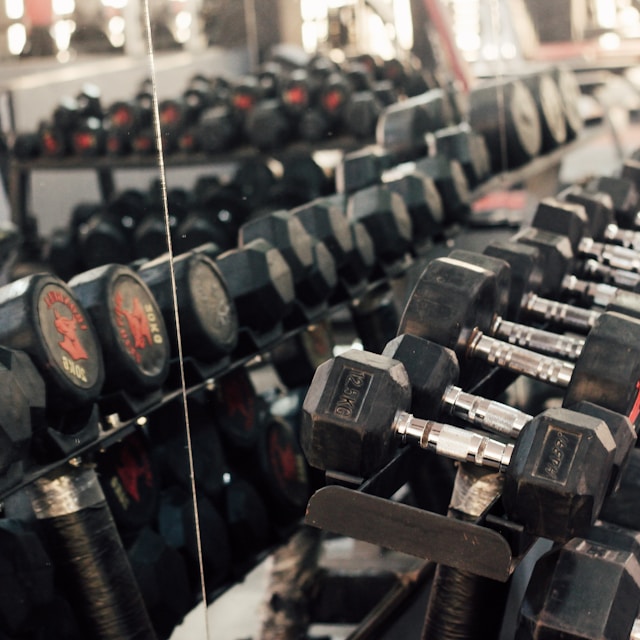Longevity-Focused Workout Routine in 2026

How Strategic Exercise Plan Improves Strength and Healthspan
A longevity-focused workout routine supports both physical strength and overall health. Popularized by leading biohackers such as Ben Greenfield, Dave Asprey, and Bryan Johnson, this method emphasizes short, effective sessions combining strength training, mobility, and breathing exercises. Many of these longevity experts incorporate cold plunges, amino acids, and precise pre-workout supplements to enhance energy and accelerate recovery. At the heart of this approach is the “superhuman workout” concept, which prioritizes efficiency, simplicity, and sustainability. This article will outline a comprehensive longevity-focused workout routine, covering daily exercise habits, strategic pre-workout practices, and integrated breathing techniques designed to optimize overall well-being.
- Last Updated: January 6, 2026
-
-
Early Morning Wakeup
The foundation of a strong workout routine starts long before stepping into the gym. In a longevity-focused plan, the early hours of the day are focused on hydration, mineral balance, and specific supplements to support energy, focus, and hormone health. These simple habits set the tone for the rest of the day’s routine.
- Mineral-enhanced water: Begin the day with filtered water mixed with high-quality mineral salts like Celtic sea salt or Baja Gold. This helps replace lost electrolytes from overnight fasting and supports adrenal function for a more energized morning.
- Hydrogen-infused hydration: To further improve absorption and recovery, drink hydrogen-rich water, which may support mitochondrial health and reduce oxidative stress, especially before intense physical activity.
- DHEA supplement: Taken in the morning, DHEA acts as a precursor to key hormones and may play a role in improving energy, motivation, and physical resilience throughout a workout routine.
- Omega-3 fish oil: This healthy fat supports hormone function, joint health, and inflammation control which is important for anyone following a demanding fitness plan or intense workout routine.
Combining hydration with targeted supplementation ensures the body is in a strong position before morning training. These early steps play a major role in preparing both mind and body for the intensity of the workout routine, which often includes breathwork, movement, and cold exposure.
-
Cold Plunge
Before starting any intense physical activity, temperature control can play a big role in mental clarity and energy levels. For those following this approach, cold exposure is more than just a wake-up, it’s a performance tool. This step comes after a breathing routine and before the workout begins.
- Cold water immersion routine: Begin the day with a full cold plunge lasting around 3–6 minutes at 48–50°F (9–10°C) to boost alertness and sharpen focus.
- Hormonal and neural benefits: Regular cold exposure spikes adrenaline and dopamine, supporting better mood and mental sharpness heading into the workout.
- Timing matters: Cold plunge first thing in the morning (before training) rather than after workouts, so muscle gains aren’t compromised.
- Circulation and fat activation: Cold plunges activate brown fat for heat production, supporting metabolism and blood flow during a demanding workout.
- Contrast therapy sessions: Alternating between cold plunges and sauna sessions supports recovery while keeping circulation high without reducing muscle adaptation.
Starting the day with cold immersion is a core part of this routine. It prepares the body for performance, improves focus, and supports recovery without interfering with physical adaptations to exercise.
-
Morning Exercise
After hydration and cold exposure, the next step is movement. But instead of jumping into intense training, the focus shifts to gentle, effective cardio paired with proper fuel. It’s all about setting the right metabolic rhythm while protecting lean muscle.
- Protein before movement: Consume around 30 grams of protein within the first 30 minutes of waking (often via a quick shake) to give the body the fuel it needs before starting low-intensity cardio.
- 30/30/30 method: This refers to 30 grams of protein, 30 minutes of steady-state cardio, all done within 30 minutes of waking. It’s a consistent part of this workout plan and helps tap into fat stores while preserving muscle.
- Low-intensity cardio approach: Choose walking or a stationary bike at a conversational pace (still able to talk or read). This keeps heart rate low, so the body stays in fat-burning mode longer.
- Caution against fasted high-intensity training: Avoid intense workouts before eating. Doing high-intensity training on an empty stomach can shift the body from fat-burning to muscle breakdown, undermining the goals of this routine.
- Short workouts when needed: On busy days, replace longer sessions with a quick 20-20-20 workout, 20 exercises, 20 reps each, in 20 minutes, to keep training consistent and time-efficient.
This light combo of cardio and protein is a consistent part of the routine. It prepares the body for more intense training later in the day and supports fat metabolism, hormone balance, and long-term results.
-
Workout Nutrition
Fueling the body isn’t just about eating clean, it’s about timing, quality, and consistency. For those following this fitness approach, nutrition plays a central role in both performance and recovery, especially before and after training sessions.
- Whole food focus: Center meals around real, nutrient-dense whole foods, minimize processed ingredients and maximize vitamins, minerals, and healthy fats.
- Breakfast after morning cardio: A typical first meal includes high-quality protein (eggs, a shake, etc.), healthy fats, and sometimes fruit or greens. This supports fat metabolism and provides stable energy for the day.
- Low-carb, high-fat approach: Follow a keto-style pattern for meals: low in refined carbs, moderate in protein, and rich in healthy fats. This keeps blood sugar steady and helps reduce inflammation.
- Hydration throughout the day: Add electrolyte mixes or a pinch of sea salt to water to maintain mineral balance, especially around training times.
- Midday support: If needed, use a greens powder or a whole food-based protein bar to maintain energy without spiking blood sugar.
- Caffeine timing: Use caffeine sparingly and avoid it in the afternoon to support better sleep which is critical for recovery and workout results.
This nutritional strategy supports every part of the workout routine, from morning cardio to nighttime recovery. Clean meals, smart supplements, and consistent hydration all help sustain energy and progress throughout the day.
-
Evening Wind Down & Sleep
What happens after sunset is just as important as what happens in the gym. For anyone following a structured fitness lifestyle, recovery begins before the head hits the pillow. A consistent evening routine helps support better hormone balance, energy, and sleep quality, key elements for any serious workout plan.
- Dinner timing and screen cutoff: Follow the 10-3-2-1 rule for evenings. Ten hours before bed, cut off caffeine; three hours before bed, no food or alcohol; two hours before, finish work; one hour before, turn off screens. This helps the body prepare for deeper rest.
- Contrast shower before bed: Take a hot shower followed by 30 seconds of cold water. This practice rapidly lowers core body temperature, which may promote faster sleep onset and improve overall sleep quality.
- Relaxation before sleep: Do some light stretching or a short breathing exercise to reduce mental activity, easing the transition into restful sleep without overstimulation.
- Cool, quiet sleeping environment: Create a cool, dark, and device-free bedroom. Tools like a cooling mattress or breathable bedding can help avoid interruptions to the sleep cycle.
- Sleep duration and quality: Aim for 6–7 hours of sleep per night. Track deep sleep and REM (using a wearable like a WHOOP band or Oura ring) if possible, over 2 hours of deep sleep is an excellent nightly goal.
- Sleep as a performance tool: Prioritizing rest leads to waking up energized and ready for the next day’s session, whether it’s low-intensity cardio or a challenging workout.
This consistent wind-down process supports both mental recovery and physical performance. It also keeps the workout plan sustainable by allowing the body to repair, reset, and hit the next day with full intensity.
-
Workout Supplements
The approach to supplements here is functional, not flashy. It focuses on the basics, nutrients the body can readily use to support recovery, performance, and energy. Each supplement is chosen with intention, often guided by personal testing or lab work.
- Plant-based protein: Choose a clean, soy-free protein powder, often taken in the morning. A 20–30 g serving supports muscle repair and fits into a low-carb diet without adding excess calories.
- Essential amino acids (EAAs): Use full-spectrum EAAs around fasted workouts to help preserve muscle. This ensures the body burns fat for fuel without breaking down muscle tissue.
- Omega-3 fish oil: Often taken in the morning (with DHEA), this supplement helps reduce inflammation, support brain health, and balance hormones.
- Vitamin D3 with K2: Combine these daily to support immune function, hormone regulation, and bone density, especially important when following a low-carb nutrition plan.
- Magnesium (glycinate or L-threonate): Use at night to aid sleep, ease cramps, and promote relaxation. Opt for highly absorbable forms to avoid stomach upset.
- Zinc: Supports testosterone production and recovery. It’s often taken at night (or in a ZMA supplement with magnesium) for better sleep and muscle repair.
- Methylated B vitamins (B12 + folate): Methylated forms of B12 and folate support energy levels, brain function, and mood regulation, and are better absorbed by those with certain genetic needs.
- Multivitamin (methylated): Acts as a daily catch-all to fill micronutrient gaps, covering bases in hormone health, detox support, and energy metabolism.
- DHEA: Taken early in the morning to aid healthy testosterone levels and mood. It’s usually paired with a source of fat (like omega-3s) for better absorption.
- Creatine monohydrate: Take 5 g daily before lifting to support muscle strength and endurance. This is common in many strength-focused workout routines.
- Resveratrol & NMN: Use together to support longevity, cellular repair, and mitochondrial function as part of an anti-aging supplement stack.
- Trimethylglycine (TMG): Add this to support methylation processes, especially if using NAD+ boosters like NMN. TMG often complements other longevity supplements.
- Ashwagandha: Take at night to help reduce cortisol, support testosterone levels, and improve sleep quality.
- Electrolytes: Mix in salt or sugar-free electrolyte packets with water throughout the day, particularly around workouts and sauna sessions, to maintain fluid and mineral balance.
This supplement routine complements the exercise regimen without overcomplication. From creatine to electrolytes, each element supports the larger goal of training hard, recovering well, and staying consistent.
-
Strength Training
Building strength isn’t just about looking fit, it’s essential for long-term health, metabolism, and overall resilience. For anyone following a structured exercise routine, weight training is a key pillar, not an optional add-on.
- Three strength sessions per week: Train with weights at least three times weekly, spacing sessions out to allow muscle recovery. This consistent rhythm supports long-term results.
- Focus on compound lifts: Make compound movements the foundation of training. Exercises like squats, presses, rows, and deadlifts engage major muscle groups and yield the best overall strength gains.
- Moderate rep range and form: Use a moderate rep range (around 10–12 reps per set) with weights that can be lifted safely. Emphasize strict form and control on every exercise.
- Training structure options: Vary the routine as needed. For example, alternate between a push/pull/legs split and full-body circuits to hit all muscle groups efficiently while accommodating schedule changes.
- Progressive overload principle: Strive each week to either lift slightly heavier weights or do a few more reps. This progressive overload drives muscle growth and strength gains.
- Benefits beyond muscle: Strength training improves bone density, boosts natural testosterone and growth hormone levels, and supports better metabolic health, key benefits for a longevity-focused routine.
Strength training forms the backbone of this workout plan. These sessions not only build muscle but also support metabolism, hormone balance, and healthy aging, making them essential for anyone serious about a longevity-focused fitness plan.
-
Cardio
Staying active on rest days doesn’t mean pushing harder, it means staying consistent. In this routine, movement is treated as a daily requirement. Cardio is used not only for endurance but also to support recovery, circulation, and mental clarity.
- Daily movement mindset: On days without lifting, still prioritize light activity (like walking or cycling) to keep the body moving and aid muscle recovery.
- Walking as a go-to: Walking is one of the most effective tools for overall health. It can be part of the daily routine and often covers the first 30 minutes of morning activity.
- Low-intensity cardio focus: Emphasize steady-state training, which includes brisk walks, easy bike rides, or light swimming, at a pace that burns fat without significantly raising cortisol.
- Fat metabolism and muscle recovery: Light active sessions help the body recover from heavy workouts while keeping fat metabolism active, a strategy that complements an intense training program.
- Avoid excessive HIIT: Limit high-intensity work. Short sprints or HIIT sessions are okay occasionally, but doing them too often can cause stress overload and impede recovery.
- Aligns with 30/30/30 protocol: This cardio strategy fits into the 30/30/30 approach, supporting the overall routine without interfering with strength training or hormonal balance.
This steady approach to cardio supports the physical demands of a challenging workout regimen while giving the body room to recharge. It’s a simple but effective way to stay active without risking overtraining.
-
Specialized Workouts
Sticking to a routine doesn’t mean doing the same thing every day. Once in a while, include specialized training challenges to keep the body adaptable and workouts mentally engaging. These optional sessions complement the main training structure without replacing it, they fit naturally into the larger workout plan.
- Short, focused circuits: Use occasional short circuits (e.g., a 20-minute, 20-exercise circuit) to test endurance, coordination, and focus while staying time-efficient.
- Online training events: Take on group challenges like a “Cold Plunge Challenge” or an “Ultimate Morning Routine Challenge” to build consistency and accountability within a community.
- Functional fitness tools: Incorporate unconventional tools (sled pushes, resistance bands, weighted vests) instead of only standard machines to simulate real-life strength demands and keep training fun.
- Customized workout cycles: Add short training phases for specific goals (like a core-strength phase or a high-rep endurance phase), always maintaining proper form and allowing recovery.
- Always anchored by basics: Remember that these are add-ons. Keep them anchored to a solid foundation of regular strength training and cardio, which remain the core of the routine.
This added variety supports long-term progress without overwhelming the system. Alongside regular strength days, mindful breathing exercises, and active recovery practices, these specialized workouts help build a well-rounded and sustainable fitness strategy.
-
Workout Recovery
Effective recovery isn’t left to chance, it’s a daily priority. While intense training pushes the body, dedicated recovery habits are designed to restore it. From sleep to cold therapy, the routine includes practices that allow the body to bounce back and perform at its best.
- Sleep-focused evening routine: End each day with the “10-3-2-1” wind-down rule (no caffeine 10 hours before bed, no food/alcohol 3 hours before, no work 2 hours before, and no screens 1 hour before). This promotes quality sleep and better performance the next day.
- PEMF mat and cooling tools: Keep the sleep environment cool, dark, and free of electronics. Use tools like a pulsed electromagnetic field (PEMF) mat or a cooling pad at night to enhance deep recovery.
- Cold therapy for recovery: Consider ice baths (3–6 minutes at 48–50°F) after tough lifting sessions or on rest days to reduce inflammation and muscle soreness, supporting longevity and repair.
- Contrast therapy: Alternate between heat (sauna) and cold (plunge) sessions. This contrast boosts circulation, reduces soreness, and aids joint and muscle recovery.
- Hot showers at night: Take a hot shower before bed and end with 30 seconds of cold water. This helps lower core body temperature to signal the body it’s time to sleep.
- Breathwork and mindfulness: Start mornings with energizing breathwork and wind down evenings with slow breathing or meditation. These practices balance the nervous system and are foundational to an optimal training regimen.
- Sunlight and grounding: Get natural light daily and spend time barefoot on grass or earth. Morning and evening sun exposure helps regulate circadian rhythm and may reduce inflammation.
- Data-driven testing: Track health metrics like HRV, blood glucose, and nutrient levels using wearables or lab tests. Adjust training, rest, and diet based on personal data to continuously optimize recovery.
Smart recovery practices make the rest of this workout plan possible. By combining quality sleep, thermal therapies (hot and cold), breathwork, and self-tracking, the body can handle the demands of intense training and stay strong over time.
-
Workout Diet
Eating well is just as important as training hard. Instead of chasing every new diet trend or counting each calorie, this routine relies on consistent principles that support energy, recovery, and long-term health. The diet is simple, clean, and aligned with the overall fitness approach.
- Whole food foundation: Prioritize unprocessed foods, plenty of vegetables, healthy fats, and quality proteins, while cutting out refined sugars and processed carbs.
- Keto-leaning meals: Build meals with nutrient-dense, keto-friendly choices: grass-fed meats, wild-caught fish, pasture-raised eggs, avocados, nuts, seeds, and dark leafy greens. These keep energy levels stable throughout the day.
- Workout-focused eating: Time protein intake to match training needs (for example, ~30 g of protein first thing in the morning). This preps muscles with fuel and is especially helpful as part of a pre-workout routine.
- Anti-inflammatory approach: Avoid inflammatory ingredients like processed oils, additives, and high-fructose corn syrup to support joint health and overall recovery.
- Hydration with minerals: Don’t just drink plain water, add trace minerals or a pinch of sea salt to maintain electrolytes and support endurance during workouts.
Overall, this eating strategy supports the physical demands of an intense training routine. By focusing on whole foods and timing nutrients around exercise, it fuels recovery, builds lean muscle, and keeps the body in sync with the workouts.
-
-
References
















